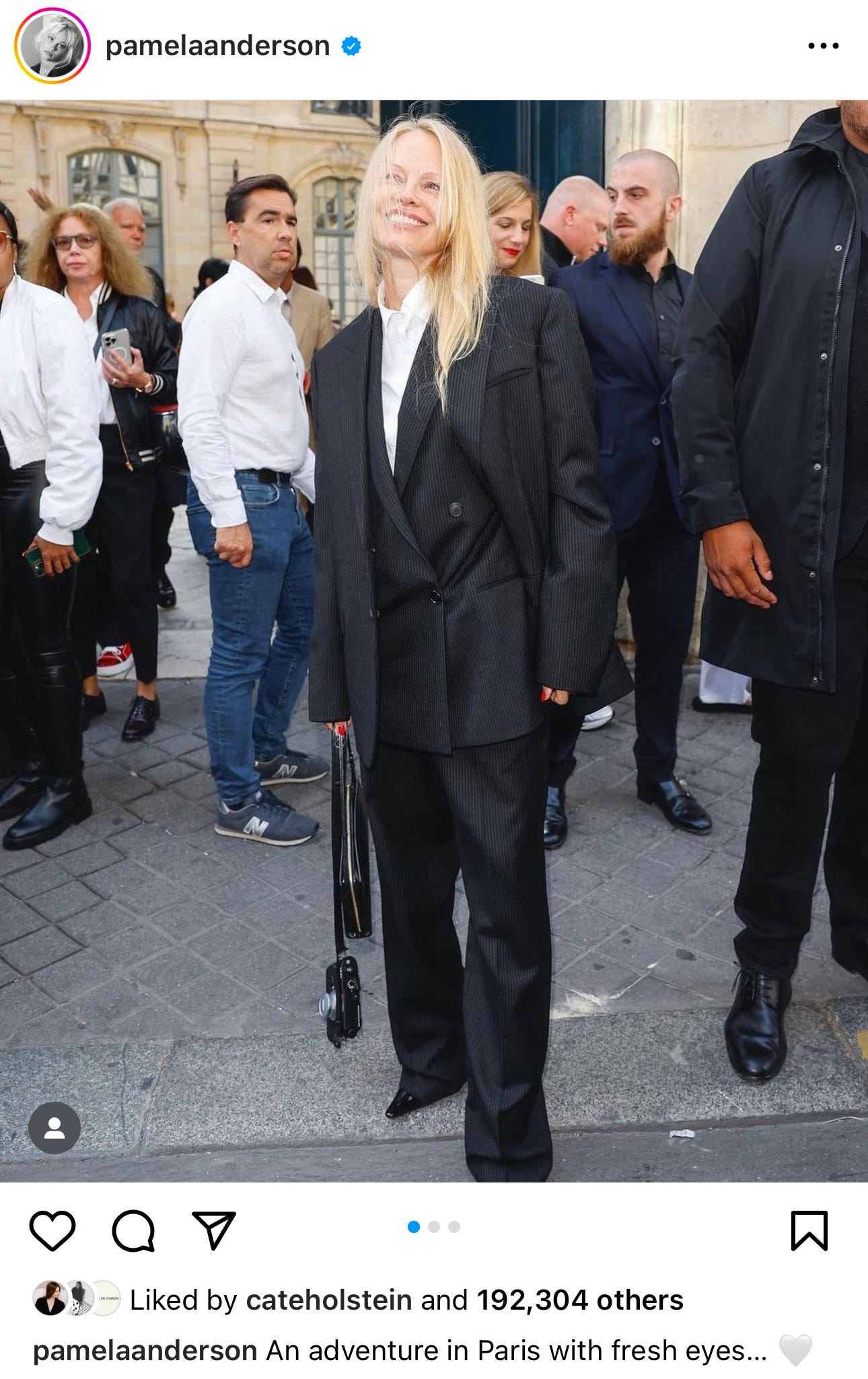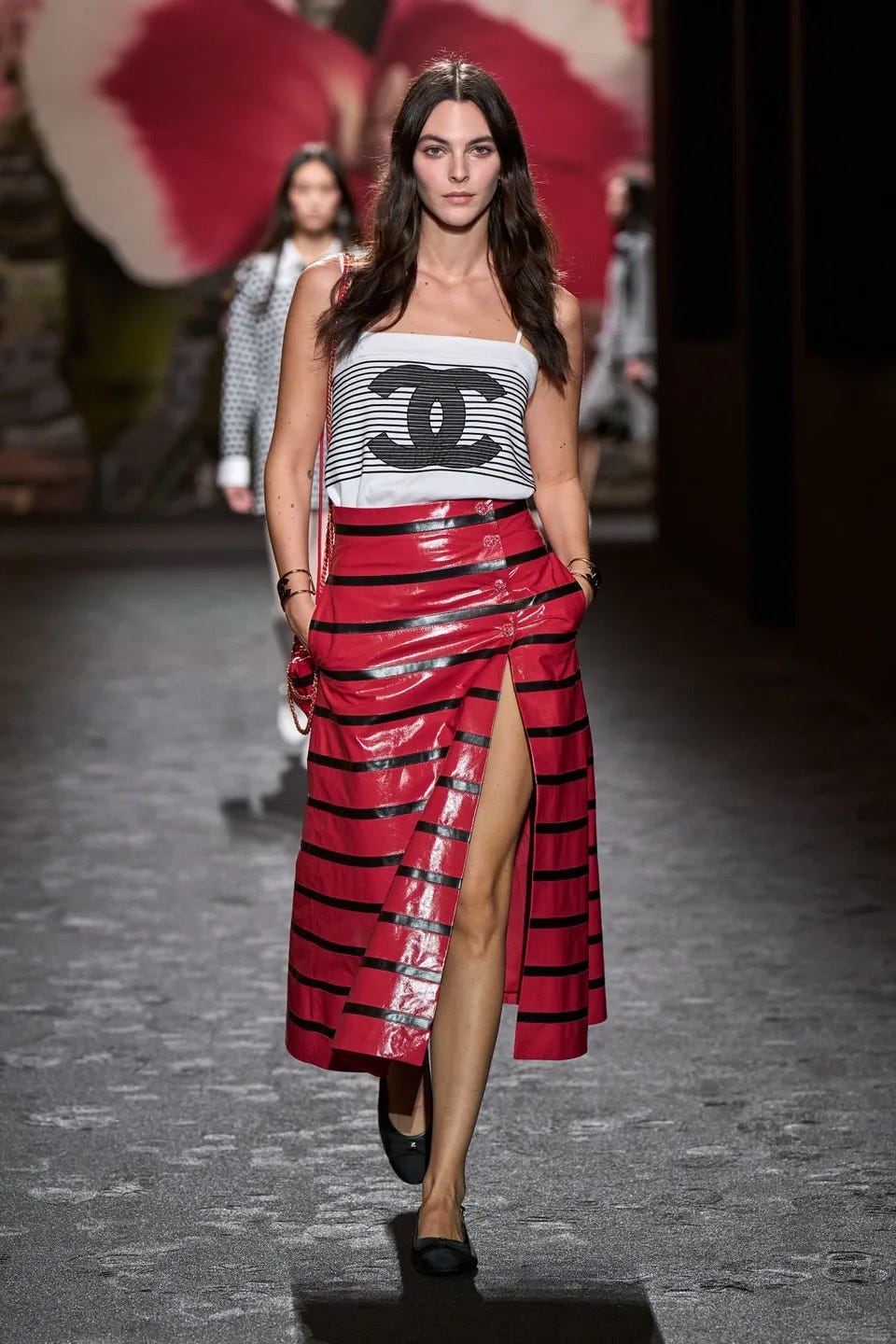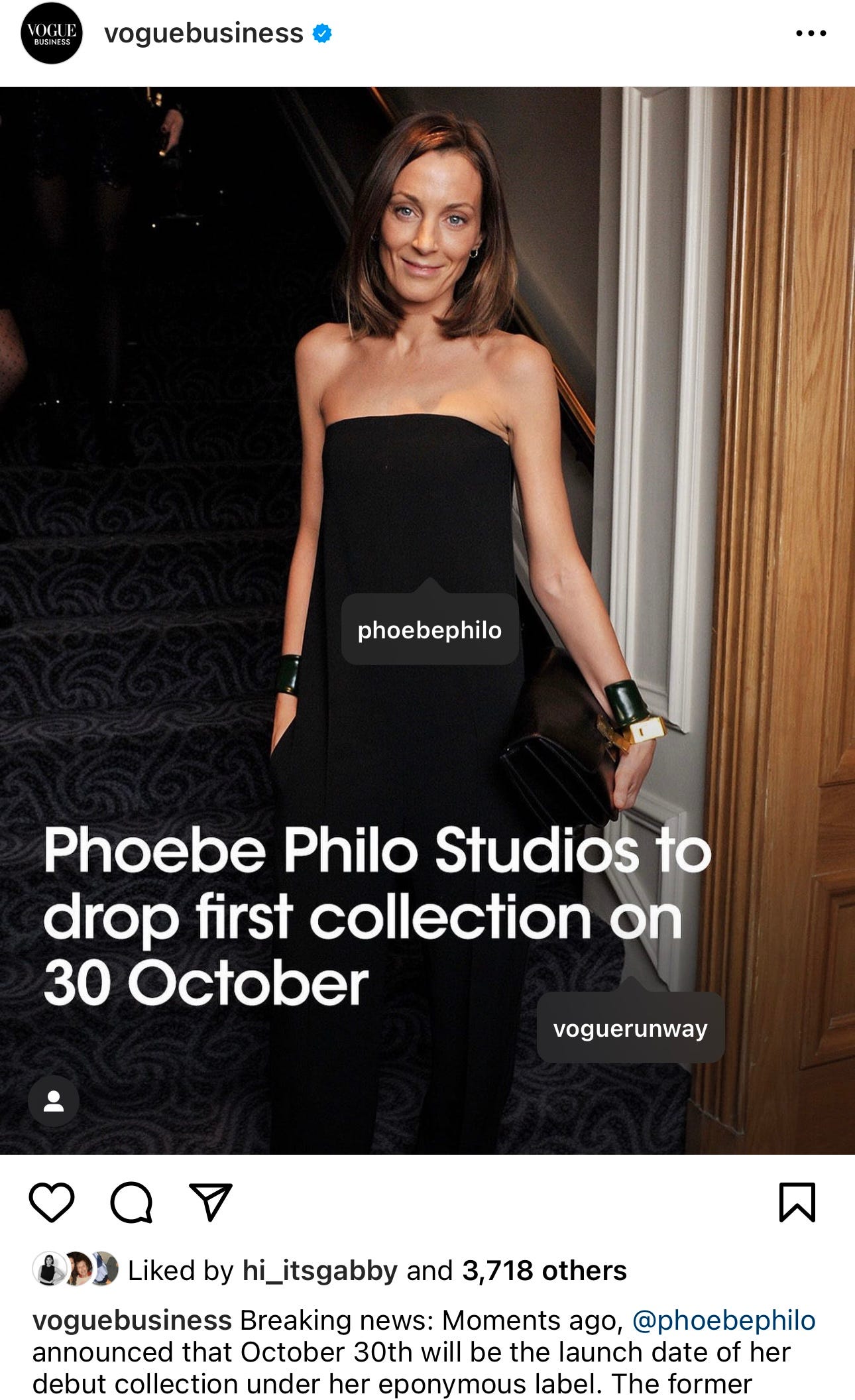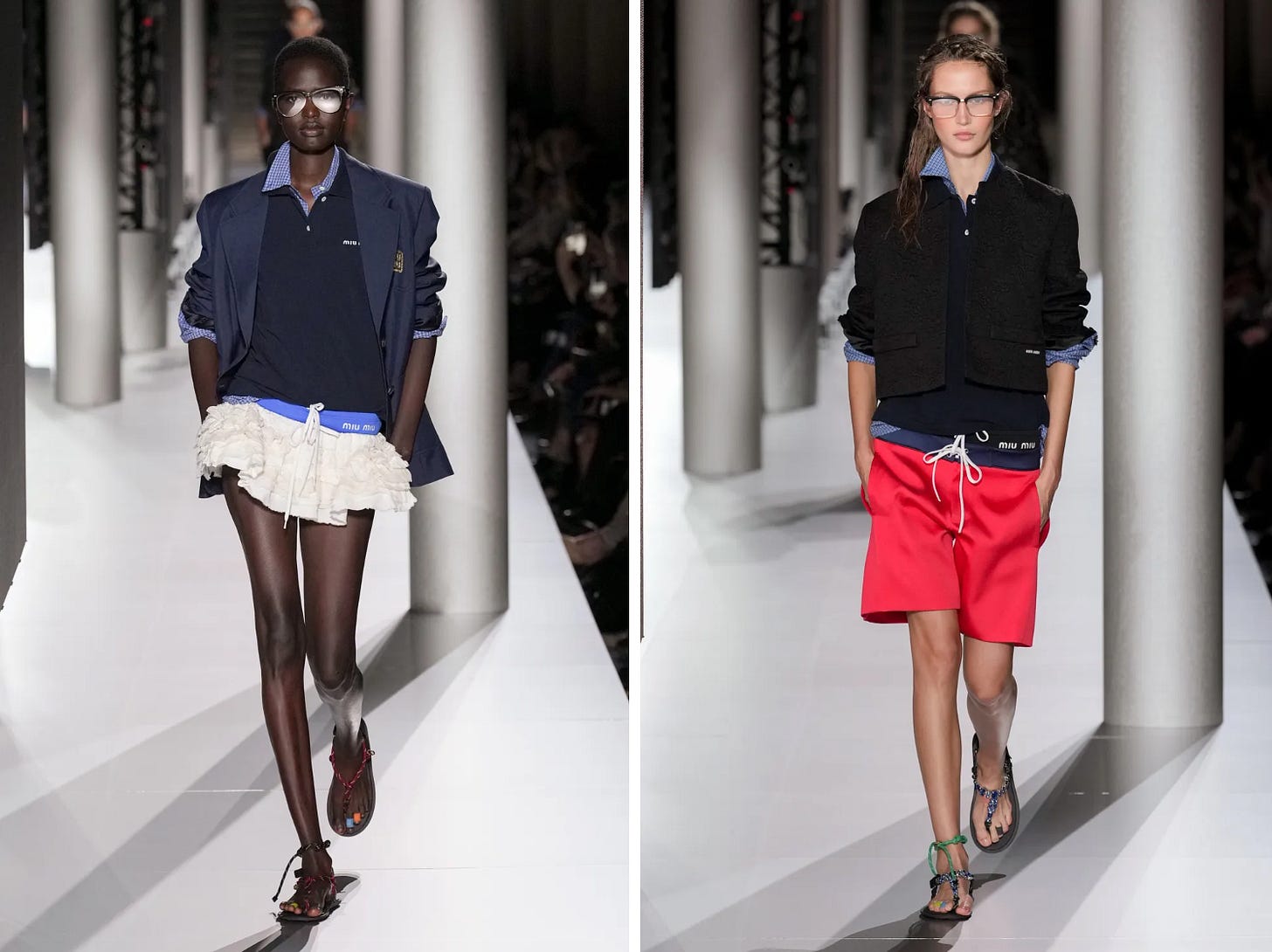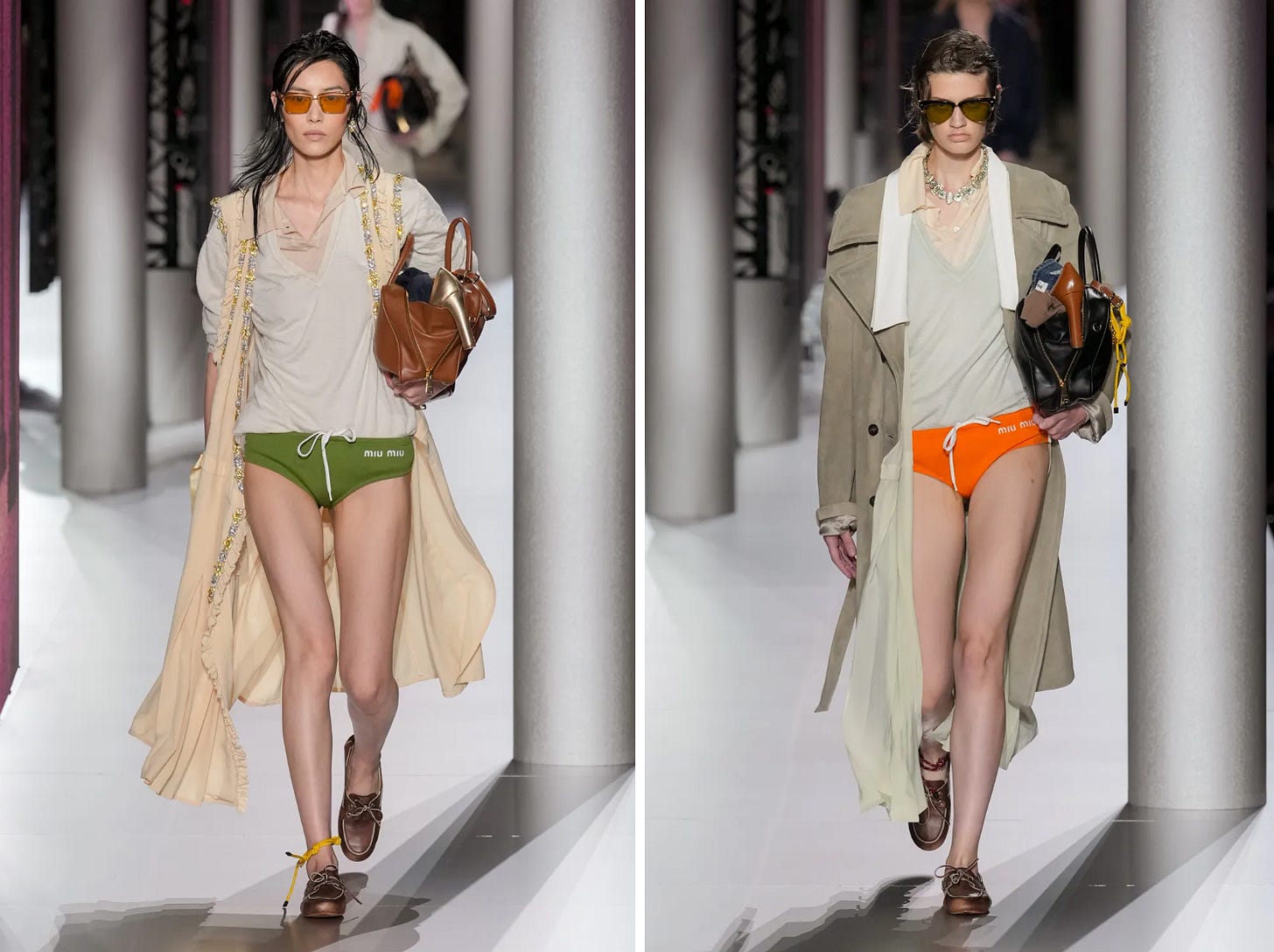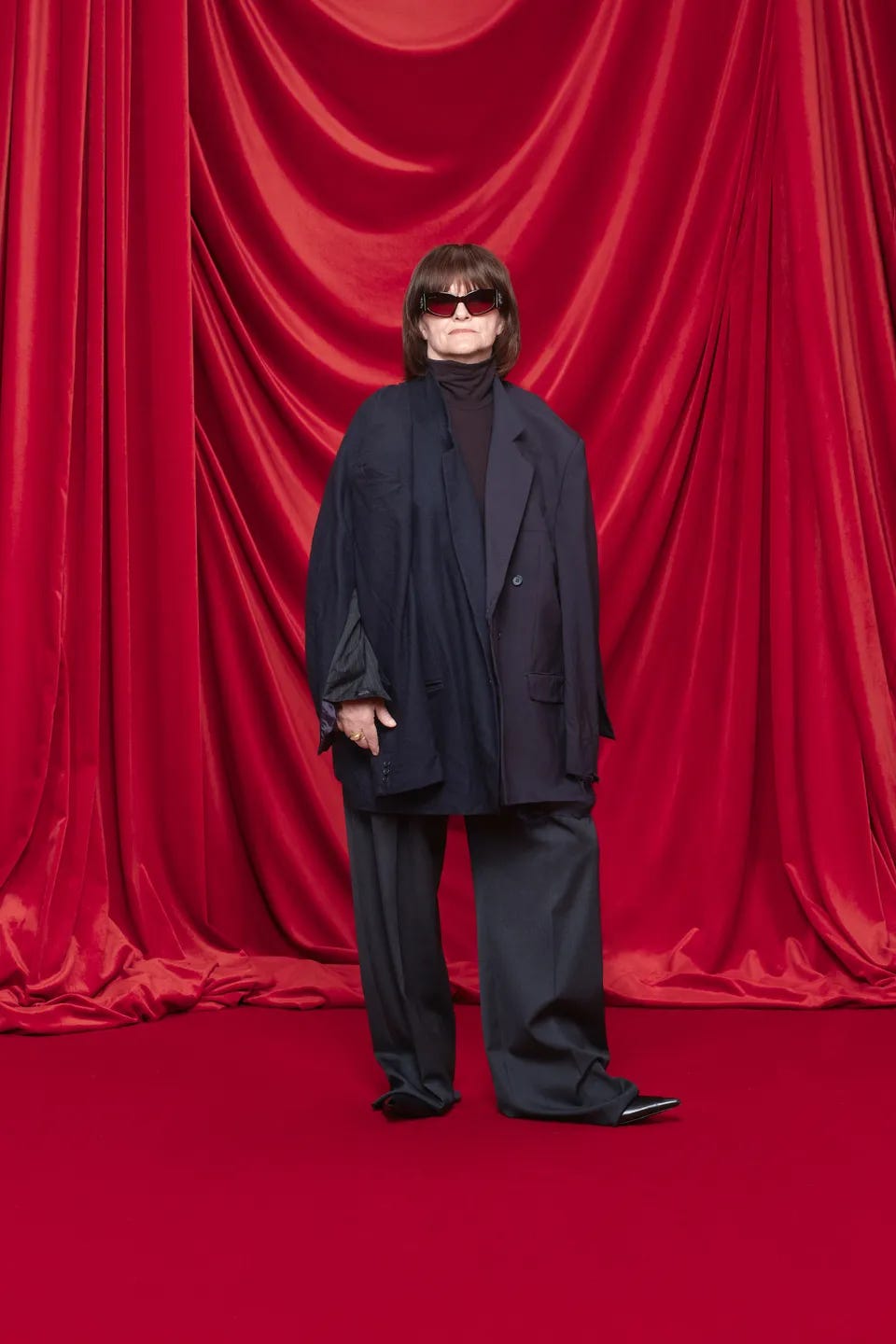Letter of Rec #054: Screen notes from PFW, rea$onable boots and truly slow fashion
Welcome back to the cafe ☕️
Fashion week
It seems like Paris was on fire last week — I don’t even mean entirely because of the clothes (it was fashion week) but held up against the landscape of what was (was!) a dark and wet New York with its bright and balmy countering glow, hovering over the cafes that line the streets leading up to those show venues, it was hard, you know, to Be Here Now and not wish, in a way, that I was there.
But I might also be one of few odd ducks who actually prefer to watch a show through a screen, away from the energy and the opinions that get mixed into it all. I tend to love many of the commercial renderings that make it to the runway. It’s inspiring to see wearable clothes presented within an editorial medium.
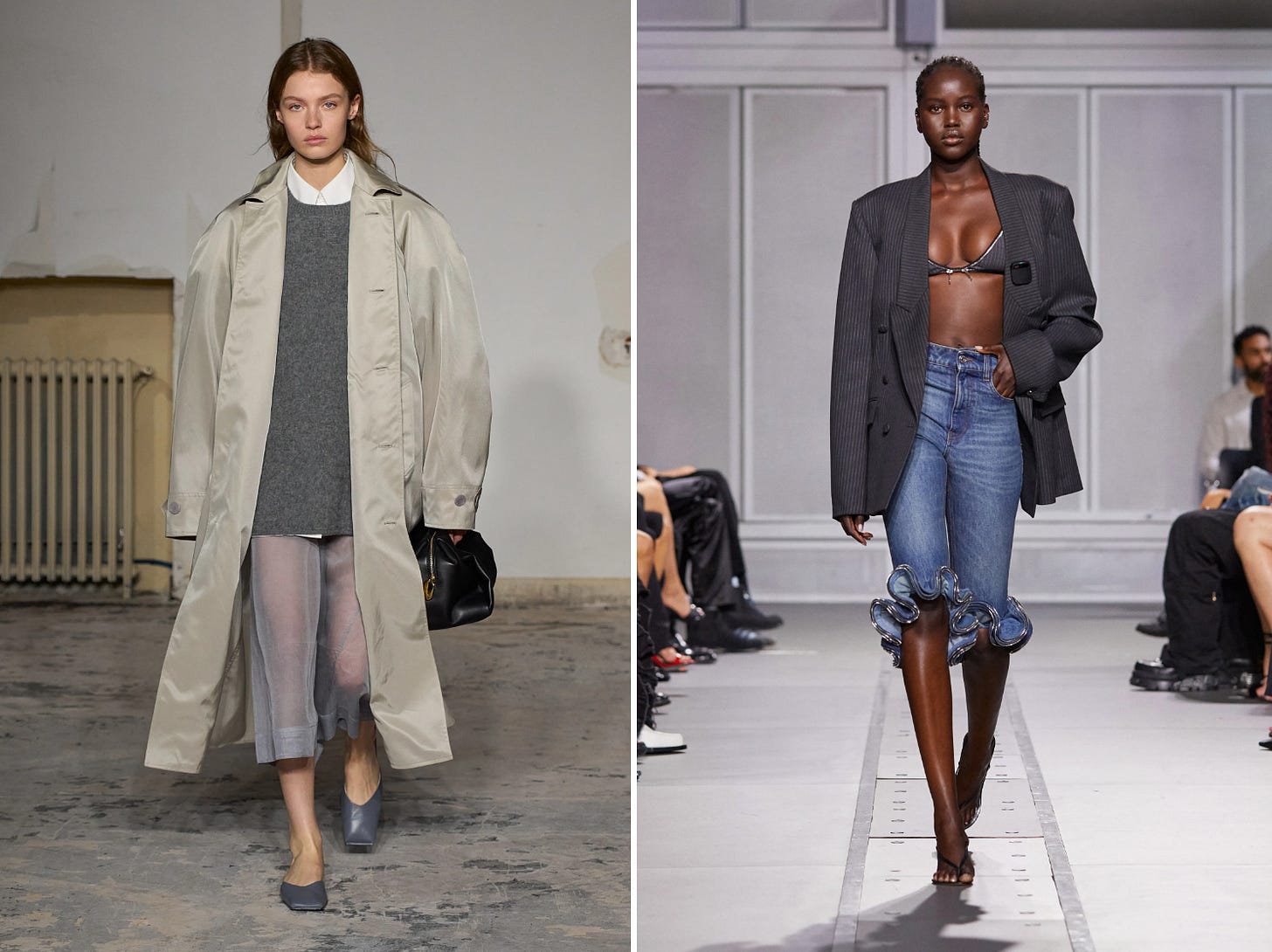
And somehow I can think more clearly, or perhaps have more confidence in, or respect for whatever opinions populate and bubble up to my surface when I’m some degrees removed.
The thing I’ve been thinking most acutely this season is that Paris might not be all that different from New York.
The people might respect fashion more — take it more seriously, observe the clothes through a less jaded (or at least friendlier) lens but the machinations of how fashion works are so global at this point, with the goal of American capitalism mixed into the creative pursuits of much more international fashion endeavors, so while you still get exemplary craft and trade and art, etc., you also get a lot of clothes. Commercial clothes — built for the express purpose of sales.
If it sounds dirty, I don’t mean for it to. I’m not sure we could handle so much ART and CRAFT, so many new ideas in one go.
I have this theory that there are like, 5 designers who develop the new ideas that actually spin the wheels of zeitgeisty fashion for everyone else at the upper echelon.
The interpretations on these ideas, which comprise many of the runway collections, are often entirely unique spin-offs — different spawn altogether, and many designers outside the 5 do operate on their own planes too. They just do what they do with limited interference from the zeitgeist (thinking about Saint Laurent for example, or Louis Vuitton, which is a unique example given that Nicolas Ghesquiere was responsible for so much of the trend ripple with his work at Balenciaga ca. 2010’s, or a softer reflection of this idea could be seen with Dries van Noten).
On a more global scale as far as limited interference goes, there is Chanel, which I have mentioned before pretty much makes its own culture.
Whether you care for the collections or not, which increasingly have become more relatable (to the extent that the shape of the clothes feel more suited to live a real person’s life) with Virginie Viard at the helm of the house, it’s tough to deny the brand of high brow fandom they’ve built. This is going off memory, but when you’re in Paris during collection season, its energy is palpable. Tuesday is Chanel day until they call it over.
The 5 hitters that come to mind now, (considering buzzy commercial appeal and a more squarely millennial customer) are Miuccia Prada, Peter Mullier for Alaia, Blazy for Bottega, The Olsens for The Row, and Phoebe Philo. This is even in spite of the fact that she’s been out for the count for the last decade (although there is hope!).
Then there is someone like Jonathan Anderson for Loewe, who totally blows my mind because you see a collection of his and it’s an emotional and intellectual experience — it feels like Fashion with a capital F, coming from Paris with a capital P. The art, the craft, the ideas. They’re moving.
It’s so rare that you get a designer like this (meaning respected by the media elite) who is also a big commercial winner. And especially out of Paris!
But you walk through the Upper East Side, for example, and will be hard-pressed not to find at least one mom walking her kids without that logo leather patch affixed to her jean or army jacket, without one of his bags on her shoulder.
I guess you get this from The Row too — but then again, the Olsens are American, so the American way (grow, baby, grow) is etched into their psyche, whether they mean for that to be or not. (Worth noting is that Jonathan Anderson is not French, he’s Irish but London-based.) More impressive as far as The Row is perhaps the ferocious safeguarding they do for their brand’s emotional equity.
I don’t know how you respond to the unveiling of a new collection from The Row, but every time I am confronted with a new take on how to style myself as informed by their rule book, I am reminded of the deep well of femininity, how much it can stretch or contract, how massive and yet slight the range of how one defines their womanhood can be.
The most seismic realizations about femininity are often hidden in the nuances of The Row’s clothes. It is its own kind of poetic.
I suspect the Olsens have seen and learned a lot from their youth in the public eye and that this has given them wisdom — the foresight to understand that getting caught up in the humdrum of public appeal, of attaching to an outcome more broadly disrupts the free flow of creative progress, a metaphor in some ways for emotional release.
There is so much to learn from those two.
Back to my point about the 5 though — I don’t think we can handle the stimulation of so many more new ideas one season at a time. Like if every designer were creating new fashion that felt entirely intellectually moving or wardrobe shifting, we might explode. These ideas take time — like years, to process and proliferate and expand.
Take a minute with these pictures from Miu Miu’s Spring 2024 show for example. Consider the order of consequences — there’s the full look, then there’s the styling (formal mid-length dresses worn as vests over speedo looks, base layer v-necks styled over polos, shorts coming out of skirts and other shorts, button downs styled under polos), and then there are the details. The colored laces on the sneakers, the rope hanging around the ankles on the models wearing boat shoes, the colored band-aids on the sandal-ed feet and the heels coming out of the bags being held in a disheveled fury like a clutch in spite of the top handles!
!!!
Can you imagine if we were constantly processing Prada’s brainchildren?
This is why it can take so long for a trend to completely cycle through the mill. There’s just so much that goes into their stickiness. And the circumstances of our lives are such right now that we electively overload ourselves almost all of the time because of our phones and apps or Netflix and whatever.
And this contributes to what makes it so satisfying, to me at least, to see something beautiful and commercial scattered between the big new ideas — to look at a collection and recognize: Oh, there’s that trend, from that idea 3 years ago. It looks different - like the interpretation is intriguing and exciting, but I’m not wholly uncomfortable because I’ve already grasped it.
Don’t get me wrong, I want to be (maybe need to be) made uncomfortable when it comes to fashion. It needs to happen in some dosing every season. I want to have to process, but not 89 times over the course of a month. It’s just too much, you know?
Anyway, that’s what I’ve been thinking about as far as fashion week.
I also love that Cathy Horyn agreed to appear in Balenciaga’s Spring 2024 show.
From the gossip levers I’m connected to, it sounds like the journalists kind of went mad: The fierce, cutting writer in front of the lens! Is it ethical? What motivated such a choice? Can we ever trust her again?
Lauren Sherman communicated her point really clearly (as often she does) in her Line Sheet and I agree pretty implicitly with her stance, which is that: all writers, whether objective or subjective reporters of their topics, have likes, dislikes, favorites, etc. Why? Because they’re human. This is something Horyn wanted to do. So she did it.
Maybe it’s deluded for me to think you can have a strong opinion, one that often goes against the grain or takes a bite into someone else’s work while you maintain your loyalty to that opinion and at the same time, while you make a decision to participate in a brand campaign, but I maintain that it’s possible, and that as the lines continue to blur between subject and journalist, product and press, it is probably more and more likely to continue.
Now, should we start with food as far as the Recs or head straight into the wearables? On tap today we’ve got good boots, seamless flare pants, a $300 bag that looks RICH and ~so much more.~
Keep reading with a 7-day free trial
Subscribe to The Cereal Aisle by Leandra Medine Cohen to keep reading this post and get 7 days of free access to the full post archives.


